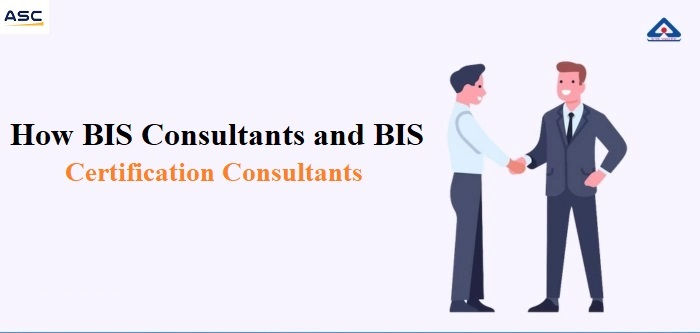The Toy Sector EPR Certificate - Full Compliance Support
- groupasc93
- Oct 28, 2024
- 4 min read
EPR, or Extended Producer Responsibilities, is a regulatory framework that makes producers responsible for their products throughout their lifecycle and especially at the end. The framework assumes that producers are responsible for the wastes generated by their products, and that they should develop products that are easier to recycle, but also more durable. EPR has been used in India in several different sectors, from electronic to plastics. Now it's being applied to the toys sector.
Toy Industry: Importance and importance of EPR
The toy industry has seen a rapid growth in India, largely due to the increase in middle-class incomes. This growth has, however, increased waste generation, particularly plastic toys. EPR is an important concept in the toy sector to combat impacts on the environment by collecting and recycling toys that are no longer being used.
EPR and the Toy Industry: Major Objectives
Waste minimization: Offer incentives to manufacturers who reduce waste by using better materials and design.
Promote environmentally-friendly manufacturing and material processes.
Consumer Awareness: Inform consumers on responsible toy disposal and recycling.
Resource Recover: Continue to recover valuable materials from used toys
EPR and Toys: Legal Framework
EPR is part of a larger set of rules under Waste Management, enacted and enforced by CPCB. It also falls within the Plastic Waste Management Rules as well as other environmental laws.
Key Laws and Acts
E-Waste Rules (Management): These rules govern mainly electronic products, but the rules on Electronic Waste can also be used to apply a producer's responsibility model.
The rules on plastic waste management will have a major impact on how manufacturers of toys deal with plastic scrap.
Toy Manufacturing Guidelines: Government can set up specific guidelines for the industry. These include those that concern the materials, the recycling process, the education of the public and more.
Toy manufacturers can benefit from EPR
Building a positive brand image: Companies that actively engage in sustainable activities are able to build their market reputation with environmentally conscious consumers.
Complying with Laws: A Certificate of EPR guarantees that an organization complies to the laws and regulations set by the government. This ensures there are minimal chances for penalties or court proceedings.
Access to Markets: More retailers ask their suppliers to provide proof that they are committed to sustainability. An EPR certification can be used to gain access to these markets.
Resource efficiency:Major manufacturers can reduce waste by recycling and reusing materials.
Plastic Toy Moulds Types
The plastic toys dominate the market as they are made from almost exclusively of mouldings. The most popular plastic toys moulds fall into the following categories.
Hollow mold: It's used to produce hollow toys with large sizes and complex shapes.
Injection mold:it has been widely used in India's toy industry. The features of this mould include a uniform product size, high-quality products and high production efficiency. This is used for a variety of components in assembly, as well as high-quality requests and large batches.
The Electroforming Mould: It has an extremely similar outer surface because it is electroformed directly with the actual material. This is best used for dolls and animals, as well as heads, arms, legs, and torsos.
How to obtain an EPR certificate for toys
Registration: Manufacturers must register with either the CPCB or SPCB in their respective states, depending on the extent of their operation.
Documents to be submitted: EPR Registration documents for the company and details of GST, authorized signatories list, documents proving compliance with environmental regulations, plans of waste management, recycling, and so on.
Development of an Action Plan:Producers must develop a plan outlining how they intend to meet their EPR obligations, along with targets regarding collection and recycling rates.
Partnership for Recycling: The company must form a relationship with a recycler that is certified and can recycle the toys effectively at the end.
Reporting Annually towards CPCB They must submit annual reports CPCB about their target completion of EPR and the amount of production, collection of recycling toys, disposal, etc.
Toys and their environmental impact
Toys have a significant impact on the environment, mostly due to their excessive plastic use. Toys use 40 tons of material to generate every dollar in sales. Amazingly 90% of toys are made from plastic. Children ingest toxic chemicals like dioxins and heavy metals such as cadmium, lead, and cadmium embedded in PVC toys.
Read Our Article: Understand the importance of EPR certification for O-Rings
Plastic toys that are littered within an ecosystem pollute the environment, mainly oceans and wildlife. India has advocated sustainable toy production and rules like the Plastic Waste Management Amendment Rules, 2021. These include a ban on single-use plastics, as well as imposing Extended Producer Responsibilities for producers, importers and brand owners. The policies will probably result in the responsible recycling and disposal of plastic wastes. This would reduce negative effects on nature.
EPR Implementation in the Toy Sector: Challenges
When implementing EPR for the toys sector, there are several challenges:
Awareness: Many manufacturers are not aware of the rights and obligations they have under EPR legislation.
Infrastructure: The current recycling infrastructure may not be able to handle certain types of toys.
Consumer Engagement: It is important to get consumers to follow proper disposal methods, but it's impossible without proper awareness techniques.
Compliance charges:The smaller manufacturers are unable to invest in their sustainability due to the compliance fees.
The conclusion of the article is:
The introduction of EPR in India's toy industry has been a major step towards sustainable waste management. EPR's core is to make manufacturers accountable for all aspects of product lifecycle, encouraging innovative designs and environmentally-conscious practices in the marketplace. These regulations are welcomed by more and more businesses, as they contribute to a better environment and increase consumer confidence.
EPR can be best implemented when manufacturers, governments, recycling companies, and consumers collaborate to create a sustainable ecosystem which encourages responsible consumption and production patterns, thereby promoting an efficient toy sector.
The information contained on this page is only for general use. This content does not constitute legal advice. ASC Group has not evaluated the statements or opinions for their accuracy, completeness or change in law.




Comments